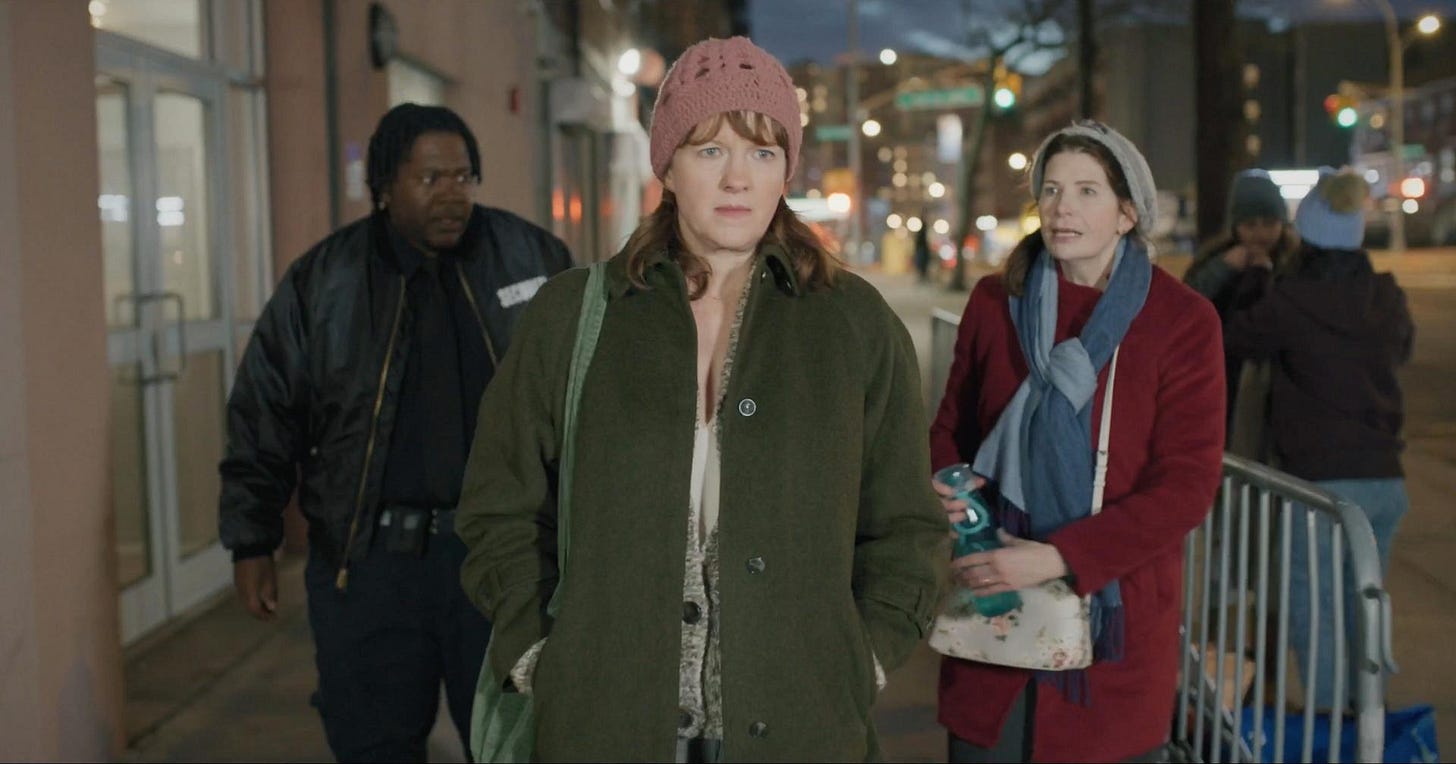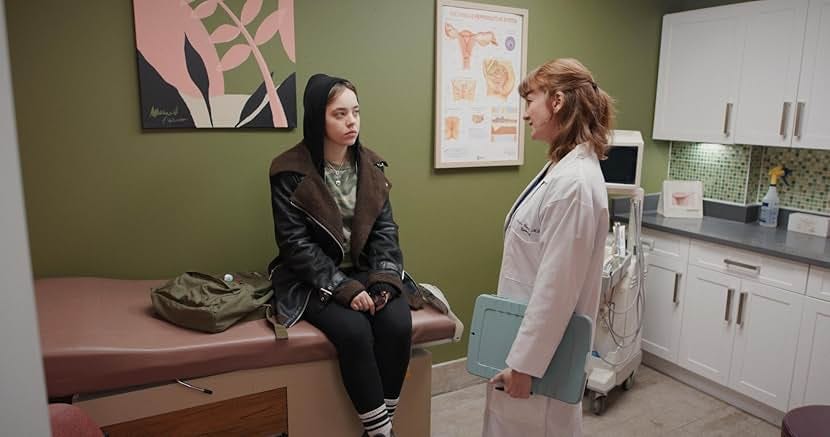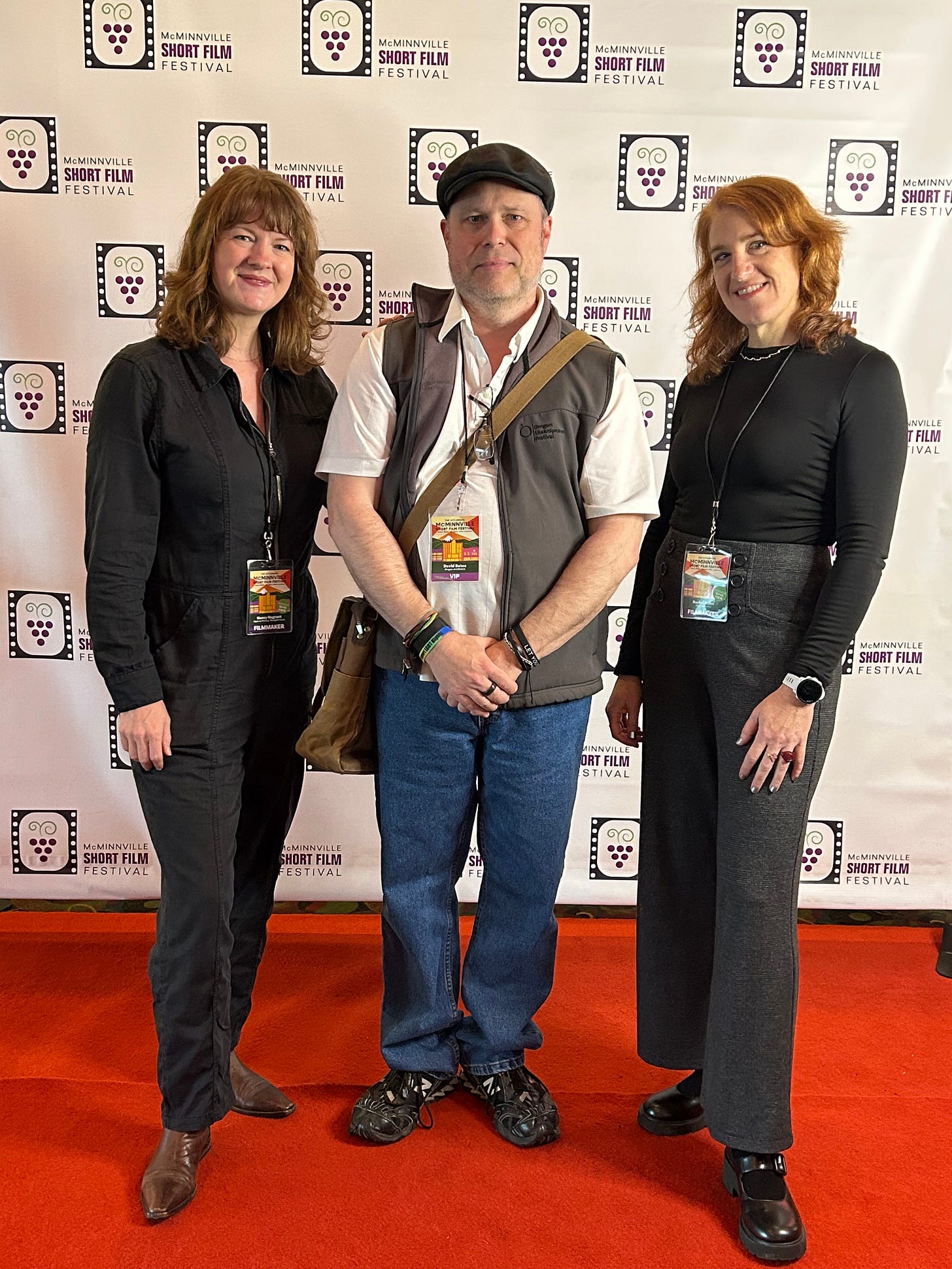Short Film Journal: 'Right to Privacy'
In which I talk with New York filmmakers Nancy Nagrant and Rachel Mann about their film in which an abortion provider meets an anti-abortion protester who is stalking her.

A film festival is a multifarious affair—so many films, events and conversations. It’s easy to get overwhelmed. The festival I’ve covered for the last few years here in my city presents an interesting problem: It’s a short film festival, which means the buffet includes more than 100 films, and with high attendance by directors, it’s possible for the field of potential interviews to number in the dozens. At one afternoon mixer this year, I interviewed six people in about an hour; it felt more like sixty.
Consequently, the elation that accompanies reporting on the McMinnville Short Film Festival is coupled with frustration and regret: Even if I see only half the films, and get half a dozen or so interviews, it’s simply not possible to include them all in the story—certainly not a story that people will want to read. Lots of films, and not a few people who were gracious enough to give me a few minutes of their time, end up … well, on the cutting room floor. I always feel bad about this.
But that was pre-Substack; the situation has changed.
My story about this year’s festival can be found here at Oregon ArtsWatch, but here we’re going to deep dive into one of my favorites: Right to Privacy, a 12-minute short directed by Julie Herlocker, written by Rachel Mann and starring Nancy Nagrant as Dr. Jen, an abortion provider who get a surprise patient: The daughter of one of the anti-choice protesters parked on the sidewalk in front of her clinic.
Right to Privacy was just one in this year’s crop of serious films that confront, in an intelligent, humane and exciting way, real-world problems: Which basically makes it utterly unlike any of the big Hollywood films that were playing in the same multiplex where this year’s MSFF was held. In their own way, regardless of the subject or story, these indie shorts are a breath of fresh air.
Nagrant attended this year’s MSFF (her fifth since 2020) with Mann with another film she produced in tow: Therapist Crush, a comedy. Both filmmakers are from New York, and when I sat down with them at an afternoon mixer at a local wine tasting room, they were still adjusting to the time change: They’d flown in the night before and didn’t get to sleep until 4 a.m. Eastern time.
But they were all in with talking up Right to Privacy.
“We really wanted to tell a story that was about reproductive rights but was focused on the provider,” Mann said. “A lot of the stories that are told about abortion in this country are often, with good reason, focused on patients. Having grown up as the child of an abortion provider — and I also spoke to a lot of abortion providers in writing this — we really wanted to tell a different kind of story.”
The story, efficiently told over just twelve minutes, was inspired by real events that Mann said her father had related from several decades ago. More reality seeped into the production: While scouting locations in New York, they encountered protesters at the clinic they ended up using.
I have a vague recollection of seeing these protesters outside a Portland clinic back in the late 1980s, and the neighborhood in Right to Privacy looked familiar. Watching it, I was trying to figure out where in Portland they’d filmed. When I mentioned this, there were big smiles and fist-pumps: They shot it in the Bronx.
“That’s so great that you’re saying that!” Rachel said. “Because what we really wanted was for it to feel like anywhere in the USA, you know what I mean?” Clearly, mission accomplished.
Persuading the clinic’s owner to let filmmakers use the space was tricky.

“The owners of the clinic were very suspicious of us at first,” Mann said. “They thought we must have some nefarious intent, that we weren’t who we said we were. So we had to go several times and sit down with them and talk about art and film and about what we were trying to do.”
“We shared the script and let them read that,” Nagrant said. “We really just built that relationship. And honestly, now she’s one of our biggest supporters. She got to come to our premier and walk the red carpet with us and she’s an executive producer on the film.”
Years ago it became possible, with affordable software, a laptop, and a cellphone, to create visuals and special effects of the same quality you’d expect of a Marvel film or a new chapter of Star Wars—to create Hollywood-scale spectacle at the kitchen table. A film like Right to Privacy illustrates, however, that to make a good film that’s about the real world, it’s about more than the technology; it’s about people.
Five producers backed the film, including Nagrant, Mann, Cashman along with their cinematographer Saro Varjabedian and Keaton Morris-Stan. I don’t know how much the film cost (financing problems led to a year’s delay in post-production) but it took more than two dozen people to make the finished product—makeup artists, the music, sound design, cinematography, etc. It takes a village and a lot of hard work.
And that work spills into promotion, which involves Nagrant and Mann spending a lot of time in airports and getting on planes to fly around the country screening Right to Privacy at festivals. At the time of our conversation in late February, they were planning to hit nine more festivals by the end of this month. Today, in fact, Right to Privacy will be screened at the Pasadena International Film Festival at 7 p.m. Readers in the Los Angeles area may purchase tickets here.
“The whole impetus behind making this film was really to start conversations, and the best way to do that is at a festival,” Nagrant said, noting the talkbacks that follow each screening. “We love the Q&A sessions, and after the Q&As we talk to people about what their experiences have been. It’s really gratifying to have those kinds of conversations.”
I told them my take on Right to Privacy was that it basically shows what I learned decades ago as a reporter: You can make all the noise you like about “Pro-life!” and feel it in your bones and soul, but when it’s your uterus or your daughter’s body, that’s the moment shit gets real and you go through some things.
“Different people have different takeaways,” Mann said. “But the idea that abortion is health care when you need it, and that it is a very personal decision comes through in the story. Just the way politics can be personal. Our society feels very fractured right now. And remembering the ways that we need each other no matter our politics is an interesting way of framing the moment.”





Would love to see this. I was surprised by how many people it took to create such a short film but I suppose the length of the film doesn't really matter in terms of the individual skills required.